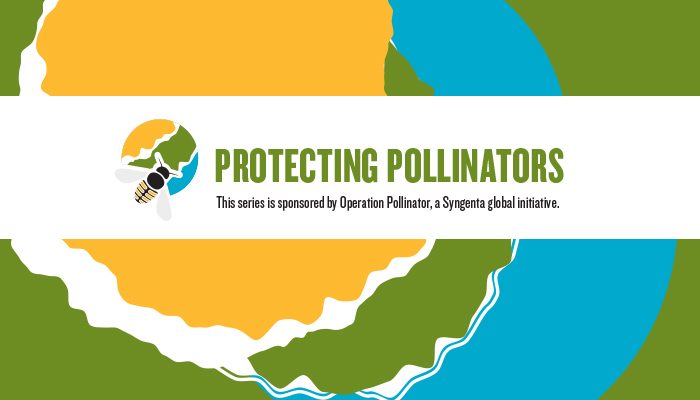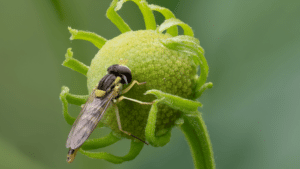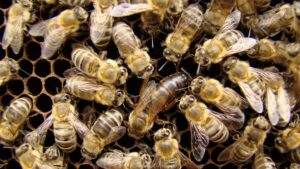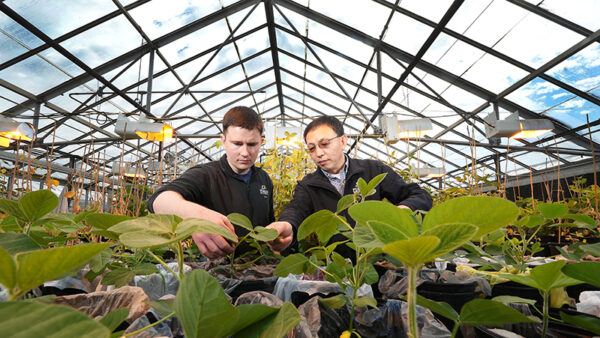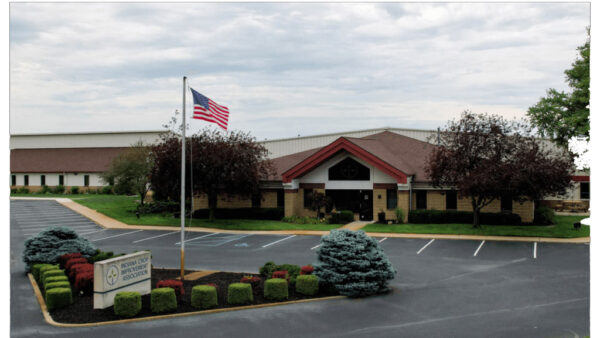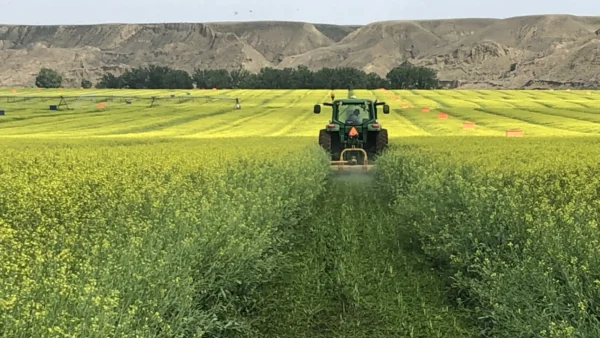With every dollar spent on better understanding the needs of pollinators, new solutions are being developed.
When examining vegetable and citrus production and the role pollinators play, two states automatically come to mind — California and Florida.
California is one of only five agricultural regions in the world with a Mediterranean-growing climate, according to Farm Flavor. As such, it is responsible for producing two-thirds of the nation’s fruits and nuts and more than one-third of its vegetables.
On its heels is Florida. In 2015, Florida ranked second in the U.S. for value of vegetable production and first in the production value of oranges, fresh market tomatoes, watermelons, grapefruit, fresh market snap beans and fresh market cucumbers.
Many fruit crops, including orchard and berry crops rely heavily on bee pollination. Birds, bats, butterflies, beetles and other small mammals that pollinate plants are responsible for one out of every three bites of food, reports the Pollinator Partnership. That means that pollinators add $217 billion to the global economy, and honeybees alone are responsible for between $1.2 and $5.4 billion in agricultural productivity in the United States.
“For some crops, the dependence is increased because varieties are self sterile and thus require cross pollination,” explains Neal Williams, University of California, Davis, entomologist and bee expert. “For these crops and for melons and squashes, which have separate male and female flowers, the dependence is very high.”
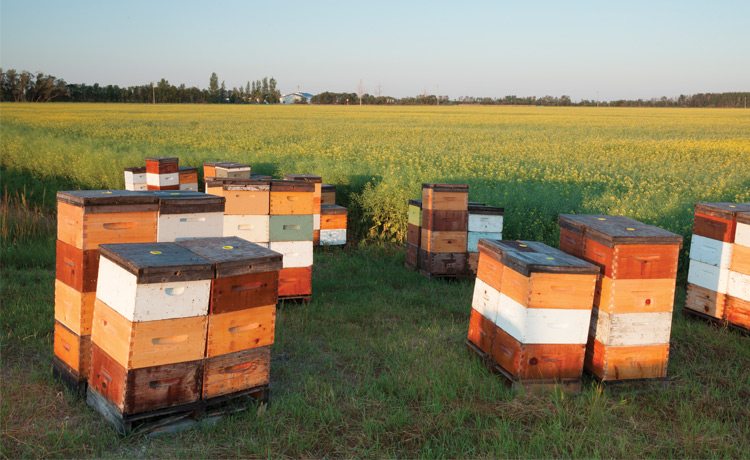
Vegetables generally have a much lower dependence in the marketed product; however, many of these crops are very dependent on bee pollination for seed production, he adds. Carrots, onions and cole crops, such as broccoli, are a few of these specialty seeds that often rely on bee pollination.
But the sustainability of these crops could be in jeopardy, because of their reliance on pollinators.
“Pollinator populations are changing,” according to the Pollinator Partnership. “Many pollinator populations are in decline, and this decline is attributed most severely to a loss in feeding and nesting habitats. Pollution, the misuse of chemicals, disease and changes in climatic patterns are all contributing to the shrinking and shifting pollinator populations. In some cases, there isn’t enough data to gauge a response, and this is even more worrisome.”
These factors and others contribute to what, Williams says, has become very high annual rates of mortality, often exceeding 35 percent.
The changes listed above make is difficult for commercial beekeepers to provide the assurances to customers that they need.
“Beekeepers in general face challenges associated with disease and nutrition, and overall bee health,” says Marty Wiglesworth, a Syngenta agronomy services manager for the South & East Coast Commercial Unit. “Mite and disease issues can be especially challenging.
“There are remedies, but they [mites and disease] are always threats to the strength of a hive,” he says.
When hiring a pollinator service, Wiglesworth says growers expect two things: Hives that are healthy and prolific and, as a result, more consistent fruit set for the crop where the hives are placed.
Williams explains that researchers continue to work on the impacts of the Varroa-virus complex — the primary disease threat — and on improving forage resources for bees in agricultural lands throughout the season.
One team of researchers is Kirk Anderson and Vincent Ricigliano at the Carl Hayden Bee Research Center in Tucson, Ariz. They report making significant progress in the development of a Varroa mite biocontrol strategy.
“There are remedies, but they [mites and disease] are always threats to the strength of a hive.”
— Marty Wiglesworth
Research Shows Promise
“During the last 10 months, we have successfully developed methodologies for isolation, genetic characterization and toxicity assays (in vitro and host-assisted) of candidate Bacillus thuringiensis (Bt) strains,” Anderson says.
He shares that they used two sources of commercial migratory colonies for their sampling of Varroa mite populations.
“Multi-gene analysis of the cultured Bt enabled the identification of novel isolates and ensured genetic diversity and variable toxicity of our Bt strain bank,” he says. “Using in vitro bioassays, we continue to identify an increasing number of Bt strains exhibiting acaricidal potential. Strains with strong in vitro effects will be field tested for toxicity to both bees and mites at the colony level over the coming months and fall of 2017.
“We are presently assessing efficacy in cage experiments that include host-associated components.”
Anderson says these finding demonstrate that the control strategy shows a significant increase in the percent survival. However, he says, conclusive colony-level testing will require another yearly cycle of Varroa, allowing time to adequately design and quantify the critical fall treatment.
An additional stress to commercial hives is that they are moved around the United States. “With hives coming out of winter dormancy and being moved around the country, that keeps stress on the bees,” Wiglesworth says.
Finally, growers are very good at adhering to crop protection labels, but there are instances where pesticide labels have not been adhered to and this puts additional stresses on the beekeeper.
With the recent Environmental Protection Agency guidelines on certain pesticide classes, additional safeguards are put in place to keep bee health top of mind, Wiglesworth says.
As of Jan. 12, the U.S. Environmental Protection Agency published its preliminary pollinator-only risk assessments for neonicotinoid insecticides clothianidin, thiamethoxam and dinotefuran and also an update to its preliminary risk assessment for imidacloprid.
The assessments for clothianidin, thiamethoxam, and dinotefuran, similar to the preliminary pollinator assessment for imidacloprid showed: most approved uses do not pose significant risks to bee colonies. However, spray applications to a few crops, such as cucumbers, berries, and cotton, may pose risks to bees that come in direct contact with residue.
In its preliminary pollinator-only analysis for clothianidin and thiamethoxam, the EPA has proposed a new method for accounting for pesticide exposure that may occur through pollen and nectar.
While efforts such as these are good and can only help bee colonies thrive, additional work is needed in more areas.
Williams says the work on the value of non-Apis bees for pollination continues and offers great potential in some instances.
“To enhance these bees and provide forage for Apis (honeybee), there is research on the value of flowering seed mixes and other plants to provide forage and habitat,” he says. “Research on honeybee nutrition suggests that improved forage can increase annual colony survival, and additional work on these forage plantings indicates that it supports wild bee diversity and can increase pollination and yield of neighboring crops.”
But he says more research is needed to understand real population impact on wild bees. “How do they improve reproduction and survival, not just visitation, of bees?” he asks. “This is key to understanding long-term impacts.”
There is no shortage of questions when it comes to pollinators and how best to protect them. Simply put, Williams says more data is needed.


